X-Doria KidFit is a watch-like wearable for children -- tracks sleep and activity
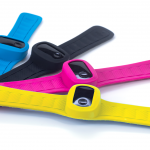
Many kids nowadays are lazy and sedentary. They come from school, sit on the couch, eat Go-Gurt and watch nonsense like Adventure Time. Actually, swap the Go-Gurt for Teddy Grahams and Adventure Time for Heathcliff and it sounds like my youth, but I digress. Kids don't play outside enough and thanks to smartphones and tablets, they don't get as much sleep as they should. Hell, can you blame them? If I had an iPad in the 80s, I never would have slept.
Today, a new product called KidFit from a company called X-Doria becomes available. In a nutshell, it is a watch-like wearable that you strap onto your kids, so you can track both their activity and sleep patterns. While some may claim the use of such a product is lazy parenting, I disagree; utilizing this technology is a proactive approach to combatting obesity and fatigue.
Microsoft releases a new keyboard for Android Wear watches
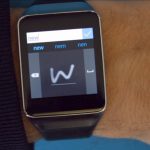
Google's Android Wear is still getting started, having a smattering of devices such as the LG G Watch and Motorola's Moto 360. The wrist wear brings the mobile platform to a small screen, and it's received a lot of attention since the launch.
Microsoft has a history of supporting Android, releasing all of its apps to the rival devices, despite Google's failure to reciprocate. Last month the the company released OneNote for watches and now the software giant is working on Android Wear again, offering a new analog keyboard app for the tiny items.
Microsoft OneNote gains Android Wear support plus new iOS 8 and Windows Phone apps
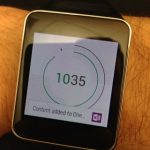
Microsoft continues its recent trend of bringing exciting new features to rival platforms by adding Android Wear support to OneNote. The most recent version of Microsoft's note-taking tool -- suitably named OneNote for Android Wear -- and a new iOS 8-friendly version of the app is also due to launch today. If you've invested in an Android smartwatch (you'll have to wait a little longer for an Apple Watch version), taking a note is as simple as uttering "OK Google, take a note" -- but be prepared for a few weird looks when you try this out in a store for the first time.
To take advantage of the voice-activated features of the app, you will also need to have the main OneNote app installed on your Android phone or tablet. Forget the fact that your smartwatch doesn't have a keyboard -- notes can now be dictated to your wrist in a way that will not in any way make people who may be nearby think you're a little, er, strange. Or, as the Office Blog puts it, "we hope you enjoy using OneNote in a manner even Dick Tracy would envy!"
Is Apple Watch out of time?

I am reluctant to criticize unreleased Apple Watch because my analysis about original iPad -- given before seeing it -- was wrong. That said, Android Wear, while seemingly sensible comparison that analysts, bloggers, and journalists make, isn't right. When put in perspective of next-generation wearables, I think Apple Watch should be compared to Google Glass.
Be honest. Which looks more innovative to you? The utility of something you see at eye level that provides real-time, location-based information is much greater than something that demands more responsive -- "Hey, Siri" -- interaction and turns the glance and fingers downward. Granted, Apple Watch delivers alerts, and you feel them, but your attention is always to look away.
Meet Motorola's new Moto X, G, 360
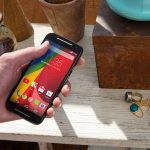
Motorola managed to really impress with last year's Moto X and Moto G. The two smartphones have shown time and time again that they do not need heavily-customized software, large screens or the fastest hardware around to stand out from the rest of the pack. They successfully targeted different parts of the market -- the former has gone after flagship buyers while the latter has sought to attract consumers on a budget -- in a different, impactful way, relying on the appeal of the overall package to tell their story. But, no matter how good they might have been, Moto X and Moto G are clearly showing their age.
Today, Motorola is relieving the pair of their leading roles, as it unveils the new Moto X and Moto G (the 2014 editions, if you will). The names might be the same, but the latest offerings are new inside out.
ASUS unveils the Android Wear-powered ZenWatch
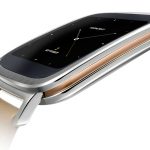
It does not matter if smartwatches have yet to catch on with consumers. The big players in the mobile industry are just getting started announcing their efforts. ASUS is the latest to reveal its Android Wear-based device, which it calls ZenWatch.
ZenWatch, which is ASUS's first wearable according to the company, is designed as a companion device to smartphones running Android 4.3 Jelly Bean or newer, meaning that, like other devices in this category, it cannot do much without being paired to one. It runs the ZenUI user interface on top of Android Wear, which offers dedicated apps and a custom, rather elegant, design, among other features.
Circular-faced LG G Watch R to be unveiled at IFA 2014
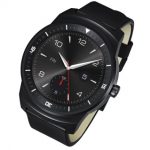
IFA 2014 kicks off in Berlin next week, and one of the devices that will be on display is the LG G Watch R. LG is looking to expand further into the wearable market with another Android Wear watch and the killer feature this time around is a round display.
The circular Plastic OLED face has be been designed to make use of the entire surface -- there is no bezel whatsoever. In terms of looks this could be what sells LG G Watch R, as it's a device that's likely to appeal to those pandering for a more traditional look to their wearable tech.
Google reveals workaround for paid Android Wear apps

Even though Android can run paid apps without any problems whatsoever, the same cannot be said about Android Wear. Google's new operating system for wearables fails to install anything but free offerings, effectively preventing developers from making money.
That is not much of a problem now, as most Android Wear-designed apps are free. But, as the platform gains more traction, this could severely impact developers' interest. Google, however, has decided to reveal a workaround.
Wearables: Job-To-Be-Done
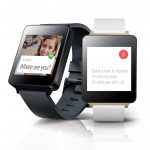
According to a report from Endeavour Partners, "more than half of U.S. consumers who have owned a modern activity tracker no longer use it and a third stopped using the device within six months of receiving it". This trend is symptomatic of a larger problem -- the job that a wearable device does is still unclear to most consumers. This is the crux of the problem I see with wearables, as they exist today.
Maybe we can look to the original wearable device, the watch, for some insight. The watch became popular with consumers because it met a ubiquitous need. The job of the watch was to give instant access to information (time), which users could then put in context (answer to the question "so what?") with their schedule, travel, etc. Consider this example:
LG's G Watch is now available

Smartwatches are not hugely popular today, but the big names in the tech industry continue to jump on the bandwagon. At I/O 2014 in June, Google announced the first iteration of its operating system for wearables, Android Wear, and today LG reveals that its first smartwatch to be based on it, G Watch, is now available.
G Watch is one of three Android Wear smartwatches announced last month at Google's yearly conference, with the other two coming from fellow makers Motorola (Moto 360) and Samsung (Gear Live). LG's offering goes for sale on Google Play and, worldwide through "key" retailers.
Google launches Android Wear companion app
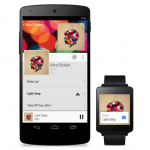
Last month, at its yearly I/O developer conference, Google introduced Android Wear, a version of the popular open-source operating system designed for wearables, like the LG G Watch and Samsung Gear Live smartwatches. Connecting such devices to Android handsets is, as usual, a companion app, that Google just launched.
The app, called Android Wear, gives users the ability to manage their wearables, allowing them to adjust the preferences for voice commands (which play a key role in the Android Wear user experience), tweak notification settings (which, again, is an important feature for the platform), and of course configure the devices from the comfort of their Android handsets.
Will Google Glass ever appeal to a mainstream audience? [Poll]
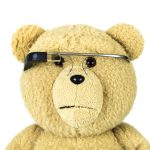
Google Glass is available to purchase in both the US and UK now, although the high asking price ($1,500/£1,000) will certainly put off many potential buyers, as will the news that if Google decides to make a change to the specs’ specs in the future (as it did this week, doubling the memory to improve performance), existing users will have to pay full price to get their hands on the latest model.
But price and lack of future proofing may not be the wearable’s biggest problems. A friend of mine who tried Glass out said the device made him feel like a futuristic cyborg, but look like a massive geek. And that could be a huge stumbling block. In June, mobile App Performance Management (mAPM) firm Crittercism commissioned an online Harris Poll survey among over 2,000 US adults aged 18+ and found that of those who were interested in wearable technology twice as many (54 percent) said they would opt for a smartwatch rather than computing glasses (26 percent).
Smart consumers will be Android Wear wary

I find the whole smartwatch craze rather amusing, even more so now that Google has officially announced Android Wear, with two models, made by LG and Samsung, shipping next month. One-day battery life? Bwaaahaha. Do they never learn? Microsoft-powered smartwatches got better than that a decade ago, and short battery life still turned out to be one of the main reasons the timepieces failed.
In product design you can never ignore existing behavior. A watch is a set-it, and forget-it device. I suppose some gadget geeks accustomed to daily smartphone charges (or less) will be dumb enough to buy. But smart consumers will be Android Wear wary. Just ask Microsoft about the road to ruin, which is paved with the best intentions, the right manufacturing partners, and concept seemingly smart that isn't.
Google I/O 2014 Day 1: What you need to know
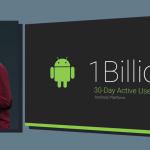
Google I/O 2014 started yesterday and, thanks to a lengthy first-day keynote, the search giant has already made plenty of headlines one after another. And for good reason, as it unveiled new software, new hardware (albeit none of it was Nexus-branded) and a number of sweeping changes to its portfolio. Say what you will, but Google sure had plenty of interesting things to show without even announcing a new Nexus tablet (as we were used to in the past two years).
The amount of information from the conference is overwhelming, so here is the tl;dr version.
Recent Headlines
Most Commented Stories
BetaNews, your source for breaking tech news, reviews, and in-depth reporting since 1998.
Regional iGaming Content
© 1998-2025 BetaNews, Inc. All Rights Reserved. About Us - Privacy Policy - Cookie Policy - Sitemap.